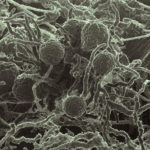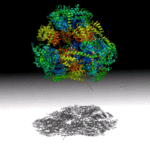Research published earlier this year by Berkeley Lab scientists in Biological Systems and Engineering Division (BSE) showing that exposure to thirdhand smoke was associated with low body weight and immune changes in young mice has recently received a flurry of renewed media attention. Antoine Snijders was interviewed via Skype for a segment that aired on New York’s Fox 5 News. In it, he noted that human infants and toddlers could potentially be at risk of exposure. “They play with toys, they play on carpets, there’s much more hand-to-mouth action than most adults do. So the exposure levels could be significantly higher in that age group,” he said. An article on USAToday.com quoted Bo Hang and Jian-Hua Mao. “We suspected that the young are most vulnerable because of their immature immune systems, but we didn’t have a lot of hard evidence to show that before,” Hang said. The study was also referenced on the blog Bustle which linked to the original Berkeley Lab News Center article.
Papers by JBEI/BSE Researchers Among Journal’s Most Impactful Articles
Two papers by Joint BioEnergy Institute (JBEI) and Biological Systems and Engineering (BSE) researchers are currently ranked among the most popular articles published in the journal BioEnergy Research. “An Investigation on the Economic Feasibility of Macroalgae as a Potential Feedstock for Biorefineries,” published in in 2015, is among the most downloaded, and “Assessment of Lignocellulosic Biomass Using Analytical Spectroscopy: an Evolution to High-Throughput Techniques,” published in 2014, is among the most cited. In the former paper, the authors—Murthy Konda, Seema Singh, Blake Simmons, and the late Daniel Klein-Marchschamer—presented a detailed technoeoconomic analysis of the economic potential and cost drivers of macroalgae as a feedstock for the production of biofuels and biochemicals. In the latter, Jason Lupoi, Singh, and Simmons undertook a comparative review of rapid, high-throughput spectroscopic techniques and standard, more time-intensive techniques to analyze candidate terrestrial biomass feedstocks for desirable traits.
Fungal Enzyme Clusters Promote Efficient Biomass Breakdown
Fungi, particularly those found in the digestive tracts of ruminant herbivores such as cattle, sheep, and goats, are very good at overcoming the resistance of plant cell walls to degradation—a major hurdle in the quest to produce sustainable fuels and chemicals from bioenergy feedstocks. Now, an international group of researchers has identified protein scaffolds in anaerobic gut fungi that provide docking sites for various enzymes, keeping them in place so that they can work together more effectively. As reported in the May 26 issue of Nature Microbiology, the structures are analogous to cellulosome complexes in anerobic bacteria, but this is the first time they have been found in fungi.
A Hollow Pyramid Unlocks Principles of Protein Architecture
Researchers at UCLA have designed a hollow, pyramid-shaped protein with a controllable cavity size that may aid the capture and release of smaller compounds. The tools used in this work, including small angle X-ray scattering techniques at the SIBYLS beamline in the Advanced Light Source (ALS), will help analyze and optimize designed-protein assemblies and understand their behavior in solution. Read more in the ALS Science Brief.
Scientists Sequence Genome of Snail That Spreads Parasitic Worm
An international team of scientists, including Environmental Genomics & System Biology Division’s Monica Munoz-Torres, has characterized the genome of B. glabrata, a freshwater snail that is instrumental in transmitting a parasitic worm to humans. The achievement could help researchers disrupt the life cycle of the worm that causes the disease schistosomiasis, an also known as snail fever. Read the science short at the Berkeley Lab News Center.
- « Previous Page
- 1
- …
- 152
- 153
- 154
- 155
- 156
- …
- 213
- Next Page »
Was this page useful?








